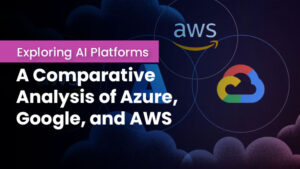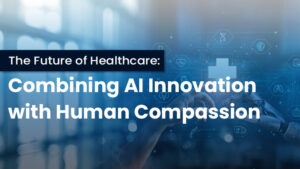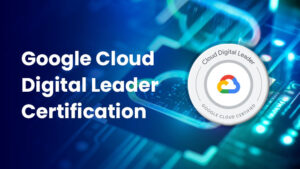Introduction
Cloud computing has revolutionized businesses’ operations by offering scalability, efficiency, and cost-effectiveness. However, the continuous evolution of technology ensures that the cloud remains at the forefront of innovation. Emerging technologies are enhancing cloud capabilities, making it an even more indispensable asset in today’s digital age. These advancements, from artificial intelligence to edge computing, are reshaping how organizations utilize cloud platforms to achieve their goals. In this blog, we’ll delve into 10 emerging technologies elevating cloud computing to new heights, making it the backbone of modern business strategies.
Master the art of cloud computing and emerging technologies with IPSpecialist. Our expert-led courses and certification programs equip you with the skills to excel in the dynamic tech landscape. Visit IPSpecialist today and take your career to new heights!
Importance of Cloud
Cloud computing has emerged as an essential tool for businesses to store and share data efficiently. Its adoption surged during the pandemic as remote work became the norm. Today, cloud computing plays a significant role in application and infrastructure software, business processes, and system infrastructure.
According to Market.us, the global cloud computing market is projected to exceed USD 2,321.1 billion by 2032, growing at a compound annual growth rate (CAGR) of 16% between 2023 and 2032. Among its segments, Infrastructure-as-a-Service (IaaS) is expected to lead with the highest growth in end-user spending at 30.9%, followed by Platform-as-a-Service (PaaS) at 24.1%.
5 Key Security Risks in Hybrid Cloud and How to Address Them
- Ensuring Compliance: Data transfer between private and public cloud networks in a hybrid model can risk compliance with regulations like GDPR. To mitigate this, ensure both environments meet regulatory standards and implement secure data transfer mechanisms.
- Enhancing Data Privacy: Frequent data movement in hybrid clouds increases privacy risks. Use endpoint verification, strong encryption, and secure VPNs to safeguard data against breaches.
- Mitigating DDoS Attacks: Hybrid clouds are vulnerable to DDoS attacks, which are hard to trace. To minimize risks, use scalable monitoring, traffic analysis tools, and DDoS protection services.
- Defining Clear SLAs: Unclear SLAs with Cloud Service Providers can lead to data governance issues. Maintain detailed agreements with regular reviews, third-party audits, and accountability clauses.
- Strengthening Risk Management: Hybrid cloud vulnerabilities require robust measures like advanced firewalls, regular risk assessments, log monitoring, and incident response plans to ensure data security and system resilience.
10 Emerging Technologies
Let’s delve into ten emerging technologies that amplify the value and capabilities of the cloud.
-
Artificial Intelligence and Machine Learning Integration
Artificial intelligence (AI) and machine learning (ML) are no longer standalone technologies. Their integration into cloud platforms allows businesses to process vast amounts of data, derive actionable insights, and automate complex processes. Leading cloud providers like AWS, Azure, and Google Cloud offer AI-powered tools that streamline operations, enhance decision-making and provide real-time analytics.
Key Benefits:
- Automates repetitive tasks and reduces human error.
- Enhances data-driven decision-making.
- Enables predictive analytics for better forecasting.
-
Edge Computing
Edge computing addresses the limitations of centralized cloud infrastructure by processing data closer to its source. This reduces latency, enhances speed, and improves real-time data processing. Industries like healthcare, retail, and autonomous vehicles greatly benefit from edge computing’s ability to manage critical data efficiently.
Key Benefits:
- Reduces latency and enhances application performance.
- Optimizes bandwidth usage by minimizing data transfer to central servers.
- Supports IoT devices and real-time decision-making.
-
Serverless Computing
Serverless computing eliminates the need for developers to manage servers, enabling them to focus solely on coding and deploying applications. With this model, cloud providers dynamically allocate resources, ensuring optimal utilization and cost savings. Platforms like AWS Lambda and Azure Functions are popular examples.
Key Benefits:
- Reduces operational complexity and costs.
- Enhances scalability and flexibility.
- Speeds up application deployment.
-
Multi-Cloud Strategies
Organizations are increasingly adopting multi-cloud strategies to leverage the best features of multiple providers. This approach ensures redundancy, enhances security, and prevents vendor lock-in. Multi-cloud management tools simplify the process, allowing seamless integration and workload distribution.
Key Benefits:
- Enhances operational resilience.
- Reduces dependency on a single provider.
- Optimizes costs by leveraging competitive pricing.
-
Kubernetes and Containerization
Kubernetes and containerization have transformed how applications are developed and deployed. By packaging applications and their dependencies, containers ensure consistency across different environments. Kubernetes, an open-source platform, manages containerized workloads efficiently, making it a cornerstone of modern cloud architecture.
Key Benefits:
- Simplifies application deployment and scaling.
- Improves resource utilization and cost-efficiency.
- Enhances portability across different cloud environments.
-
Quantum Computing in the Cloud
Quantum computing, though in its infancy, is gaining momentum as cloud providers like IBM and Google offer quantum services. This technology can potentially solve complex problems in areas like cryptography, drug discovery, and financial modeling that are beyond the capabilities of classical computers.
Key Benefits:
- Accelerates problem-solving for complex algorithms.
- Drives innovation in research and development.
- Enhances encryption techniques for better security.
-
Cloud-Native Development
Cloud-native development leverages the full potential of cloud platforms, enabling developers to build scalable, resilient, and flexible applications. This approach emphasizes microservices architecture, DevOps practices, and continuous integration/deployment (CI/CD) pipelines.
Key Benefits:
- Enhances application scalability and reliability.
- Speeds up development cycles.
- Promotes innovation through agile practices.
-
Internet of Things (IoT) in the Cloud
The proliferation of IoT devices demands a robust cloud infrastructure for data storage, processing, and analysis. Cloud platforms with IoT services provide real-time insights, enabling businesses to monitor and optimize their operations.
Key Benefits:
- Facilitates real-time monitoring and analytics.
- Enhances predictive maintenance for industries.
- Supports seamless integration of IoT devices.
-
Blockchain Integration
Blockchain technology, known for its transparency and security, is finding its way into cloud ecosystems. Cloud providers now offer blockchain-as-a-service (BaaS), enabling organizations to build and deploy decentralized applications without managing the underlying infrastructure.
Key Benefits:
- Enhances data security and transparency.
- Simplifies the development of decentralized applications.
- Facilitates secure and immutable transactions.
-
Sustainability and Green Cloud Initiatives
Sustainability has become a key focus for cloud providers, with efforts to reduce the environmental impact of data centers. Green cloud initiatives include using renewable energy, optimizing cooling systems, and adopting energy-efficient hardware.
Key Benefits:
- Reduces carbon footprint and promotes sustainability.
- Enhances energy efficiency and cost savings.
- Aligns businesses with environmental regulations.
Conclusion
Emerging technologies continue to redefine cloud computing, making it an essential enabler of innovation and growth. These advancements, from AI and edge computing to blockchain and sustainability initiatives, empower businesses to stay competitive in a fast-evolving digital landscape. Organizations that embrace these technologies can unlock new possibilities, streamline operations, and deliver value to their customers.
FAQs
-
How does AI enhance cloud computing?
AI enhances cloud computing by automating processes, improving decision-making, and enabling predictive analytics. Cloud providers integrate AI tools to process vast datasets, optimize workflows, and deliver personalized user experiences.
-
Why is edge computing important for IoT?
Edge computing processes data closer to its source, reducing latency and enhancing speed. This is crucial for IoT devices that require real-time data processing to function efficiently, such as in healthcare, smart cities, and autonomous vehicles.
-
What are the benefits of adopting a multi-cloud strategy?
A multi-cloud strategy ensures operational resilience, reduces dependency on a single provider, and optimizes costs. It allows organizations to leverage the best features of different cloud platforms while minimizing risks.







